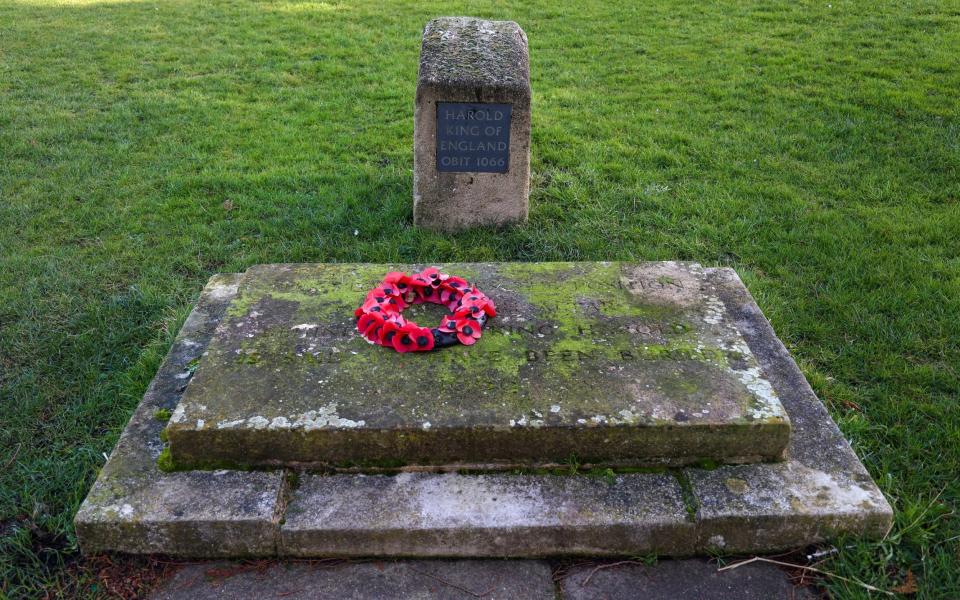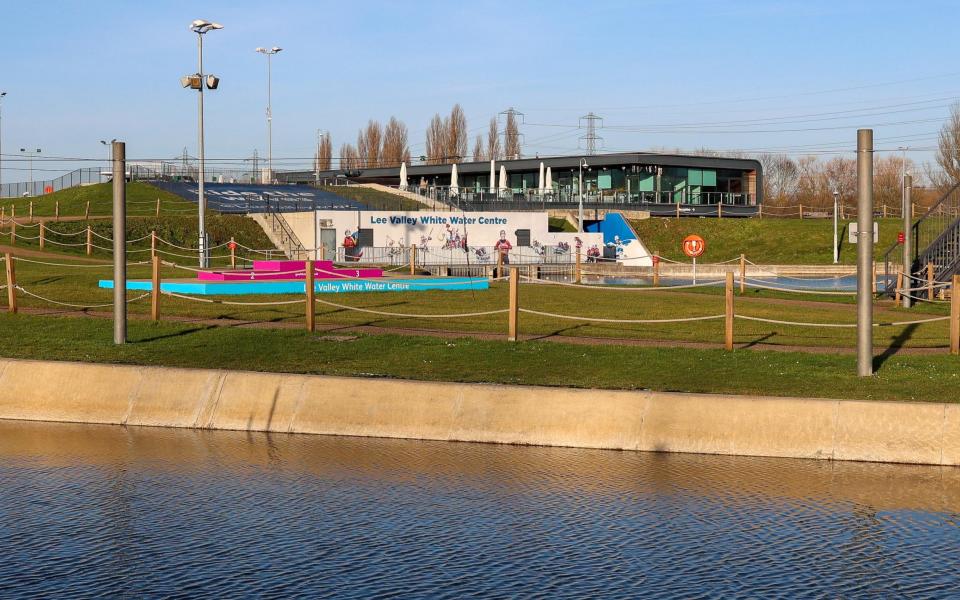When I Googled ‘Waltham Cross’ recently, the top news result was a call from a witness following an assault. Secondly, a story about the winners of the People’s Postcode Lottery. The third, however, didn’t quite fit the same picture of local news: ‘Google to build £800 million data center in Waltham Cross,’ it said.
Google’s new complex, close to the A10, will be the company’s first major data center in Great Britain. This means that when you use Google Search, Maps or YouTube, your device is likely firing off zeros and ones just outside the M25. Hundreds of new jobs will be created. So what will Google’s new employees find in Waltham Cross, Hertfordshire’s very own Silicon Valley?
My day starts at the Eleanor Cross: the center of the city, according to Google Maps. There were originally twelve of these in the east of England, commissioned by King Edward I in the late 13th century in memory of his wife. Only three of the original Eleanor Crosses remain fully intact: this one, and those at Geddington and Hardingstone, both in Northamptonshire.
Waltham’s has been well restored and the future feels safe due to the pedestrianized nature of the area; although during my visit there was a white van parked on one side of the monument and a mobility scooter on the other, while men drilled a large hole nearby. An accordionist did his best to lighten the mood before stopping to shout at someone who had accidentally kicked his coin box.
It is an incongruous setting for such a historic monument. If a pigeon turned 360 degrees on its top, it would see a tattoo parlor, a Polish supermarket, a place called Fishy Delishy, a Chinese medicine center, a gold dealer, a video store (called Moondance), a baklava shop, a bookmakers, a slot machine and a place that claims to sell the best Deutsche doners. Impressively international, actually, for one of the largest Brexit-voting boroughs in the country.


The truth is that Waltham Cross is one of the most deprived areas in Hertfordshire, with income and education levels well below the county average. The Google data campus could be part of a better future for the city, but for now there are no flat-white salons, no delis. Silicon is certainly there, but only in the form that is implanted in the breasts and buttocks during countless cosmetic procedures. So I’m grateful to hear, after a quick Google search, that I would do well to travel just two miles east, across the Hertfordshire/Essex border to Waltham Abbey, to find a richer visitor experience.
The Sacred Heart of Waltham Abbey
I started, as any visit to Waltham Abbey should, with a visit to the city’s holiest site: Tony’s Pie and Mash Shop.
Tony Lane, originally from Mile End, moved to the Waltham Abbey area at the age of twelve. “When I first moved here, it was like moving into the countryside,” he laughs. “My father had an old Zodiac. When they built the estate, we often visited and brought a packed lunch. My mother took the bottle out.”
Despite its proximity to London, Waltham Abbey has the feel of a city in its own right. “Not just some of the excesses of the London suburbs,” in the words of local estate agent Peter Roffey. Maybe it’s because you’re just off the M25, or maybe the sense of closure comes from the absence of a train station, something local campaign groups have long wanted to introduce (neighbouring Waltham Cross has links to Liverpool Street).


None of that matters much to Tony, whose pies-and-mash empire formed a queue around noon. Most of his customers come from afar to try his famous pie, mash and spirits (from £5.50) or – slightly less popular these days – eel and mash dishes (from £8). One guest traveled particularly long distances to find his solution.
“He first came into the shop years ago when he was at Real Madrid,” says Tony. Behind him, a wall is covered with old boxing photos, including some of himself as a young man. But among the bloodied faces is a signed photo of David Beckham. After that surprise visit, the former England captain became a loyal customer, and it wasn’t long before Tony was asked to personally deliver cakes to his home.
“He’s a nice guy,” he says, as cool as you want.
‘A market town with a village mentality’
From the central square – where a market is held twice a week, on Tuesdays and Saturdays – I walk through the beautiful, car-free Sun Street. Its flanks are mainly lined with independent shops and at its centre, a colorful mosaic marks the Greenwich meridian. For the grand opening in 2016, Morris dancers (west) and a traditional Chinese dance troupe (east) were scheduled to meet on the line, but when the day arrived, the Chinese troupe didn’t show. Apparently, some locals improvised and did their best to create a traditional Chinese dance to fill the void. Unfortunately, or perhaps fortunately, no known footage of the event exists.


Andrew Crowley, a local funeral director, has lived here since 1990. I meet him at about 0.00000001 degrees east.
“I describe it as a market town with a village mentality,” he says. “It can take 10 minutes to walk to the town hall, which is a two-minute walk, because people stop to have a chat. It’s a close-knit community.”
Indeed, people I meet are eager to talk and seem proud of local history. Several people point out the Epping Forest District Museum and Library at the end of Sun Street, where the story of the area is told through objects such as the Waltham Abbey Bible and a woolly mammoth tusk. It is believed that the beasts roamed the Lea Valley during the last ice age. And this tusk is said to have been found just around the corner on the abbey grounds.


A king’s resting place (maybe)
Waltham Abbey Gardens, in the grounds of a former Augustinian abbey, form the grassy, peaceful heart of the town. Despite being the last religious community to close during the Dissolution of the Monasteries in 1540, very little of the original Waltham Abbey remains, apart from a 14th-century gatehouse and bridge, plus the walls of a post-medieval house that was built after the 15th century. dissolution.
Even further back in history, the legend goes that King Harold Godwinson was buried at Waltham Abbey after his death at the Battle of Hastings, and a headstone marks the spot where his remains may or may not lie. If that’s true, it’s a great place to rest. Get lost in the zigzagging paths of Cornmill Meadows (a site of special scientific interest), just behind the abbey grounds, and you’ll feel quite cut off from the world.


“It may not have that slightly chic, cosmopolitan London vibe, but the proximity to nature kept me sane for a few years,” says Diana Jarvis, a photographer who lived in the area until 2019. “From my flat I could walk straight into the meadow – famous for its dragonflies and damselflies in the summer – in about a minute. I hope more people discover the solace of nature and the intricacies of the Lea Valley ecosystem.”
It looks like there will be a few more coming soon. Like Waltham Cross, there is little connecting Waltham Abbey to California’s Silicon Valley – it is 122 degrees west of here, almost half a world away. But what ‘the abbey’ does have is a history that cannot be controlled or removed. It has meadows and gardens to wander around. It has pie and mash good enough for one of the most famous men in the world. The Google lots will have plenty to discover in Waltham Abbey, if they take the time to look for it.
Things to see and do
Royal Gunpowder Mills
It’s surprising that more people don’t know about Waltham Abbey’s Royal Gunpowder Mills, one of three that served the country and the only one to remain intact (it’s said that Hitler didn’t bomb it in case the facilities came in handy may come one day). Shortly after the Second World War, gunpowder was no longer produced, but until 1991 the Ministry of Defense managed a secret research center from here. Today you can explore the 170 hectares of land under the guidance of a wise volunteer in a rickety old Land Rover. (ask for Brian, a true gentleman and a fountain of knowledge).


The Lee Valley White Water Center
Opened ahead of the London 2012 Olympic Games, the Lee Valley White Water Center is a fascinating place to visit. It is the most advanced purpose-built water sports center in the country, and during my visit Team GB were in training for the Paris Olympics. Even if you don’t feel like getting wet, everyone can explore the grounds, with tiered picnic areas to watch the action, plus the Terrace Bar and Café, which plays live music in the summer.


River Lee Country Park
The River Lee Country Park includes canal waterways, lakes and mills, with miles of cycle paths and trails to explore. From here, if you wish, you can walk along towpaths all the way to East London, past the Olympic Park and through the hip heart of Hackney.
Epping Forest
Just a few miles from Waltham Abbey lies Epping Forest, the 6,185 hectare former Royal Forest that served as a hunting ground in a previous life. It’s a tapestry of ancient trees and wildflower meadows, with 286 kilometers of trails to explore.
For more information about visiting Waltham Abbey, see visitessex.com, walthamabbey-tc.gov.uk and visitleevalley.org.uk. The Greater Anglia train from Tottenham Hale to Waltham Cross takes 13 minutes and costs £8.20 for a return on an off-peak day.